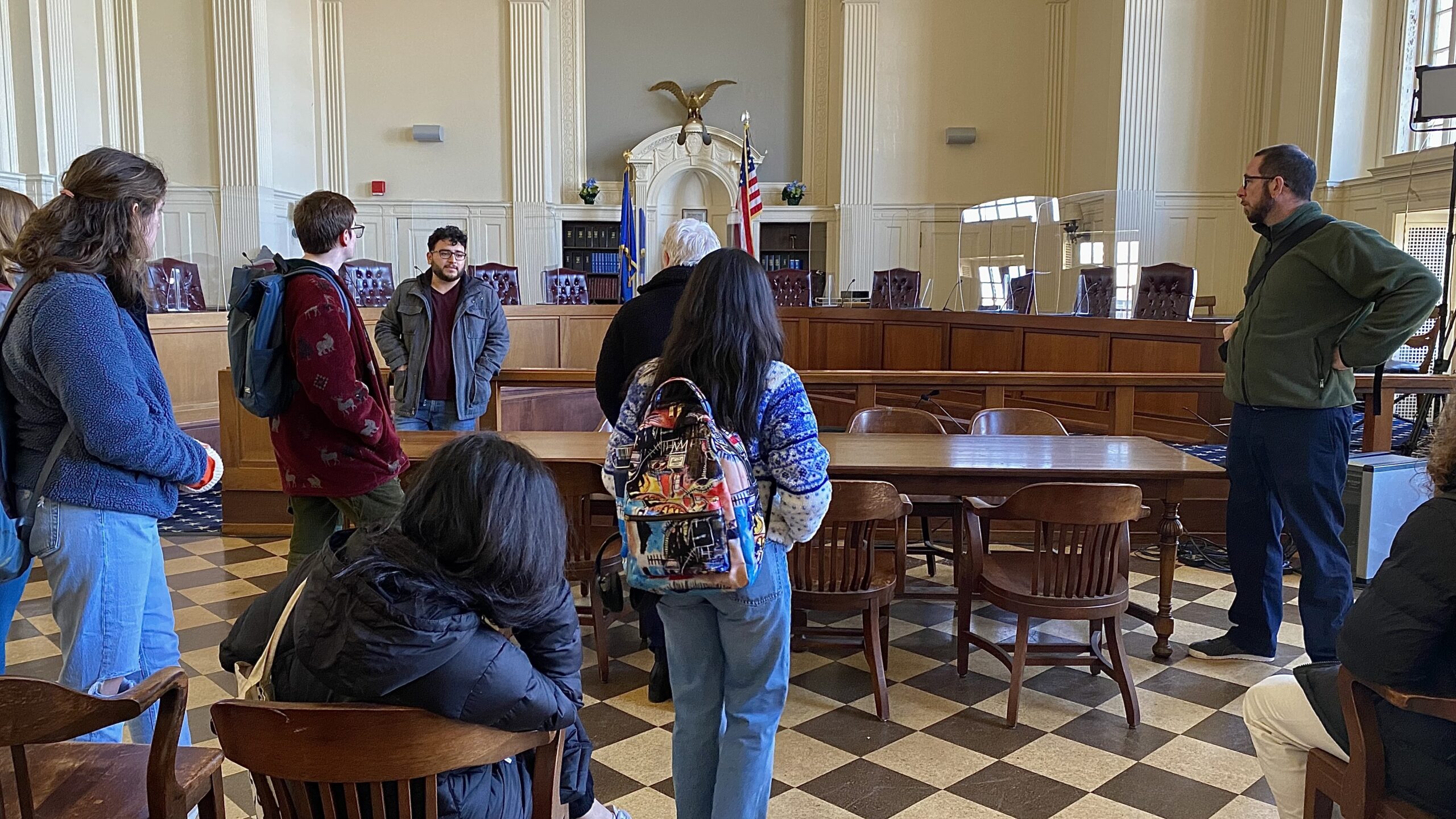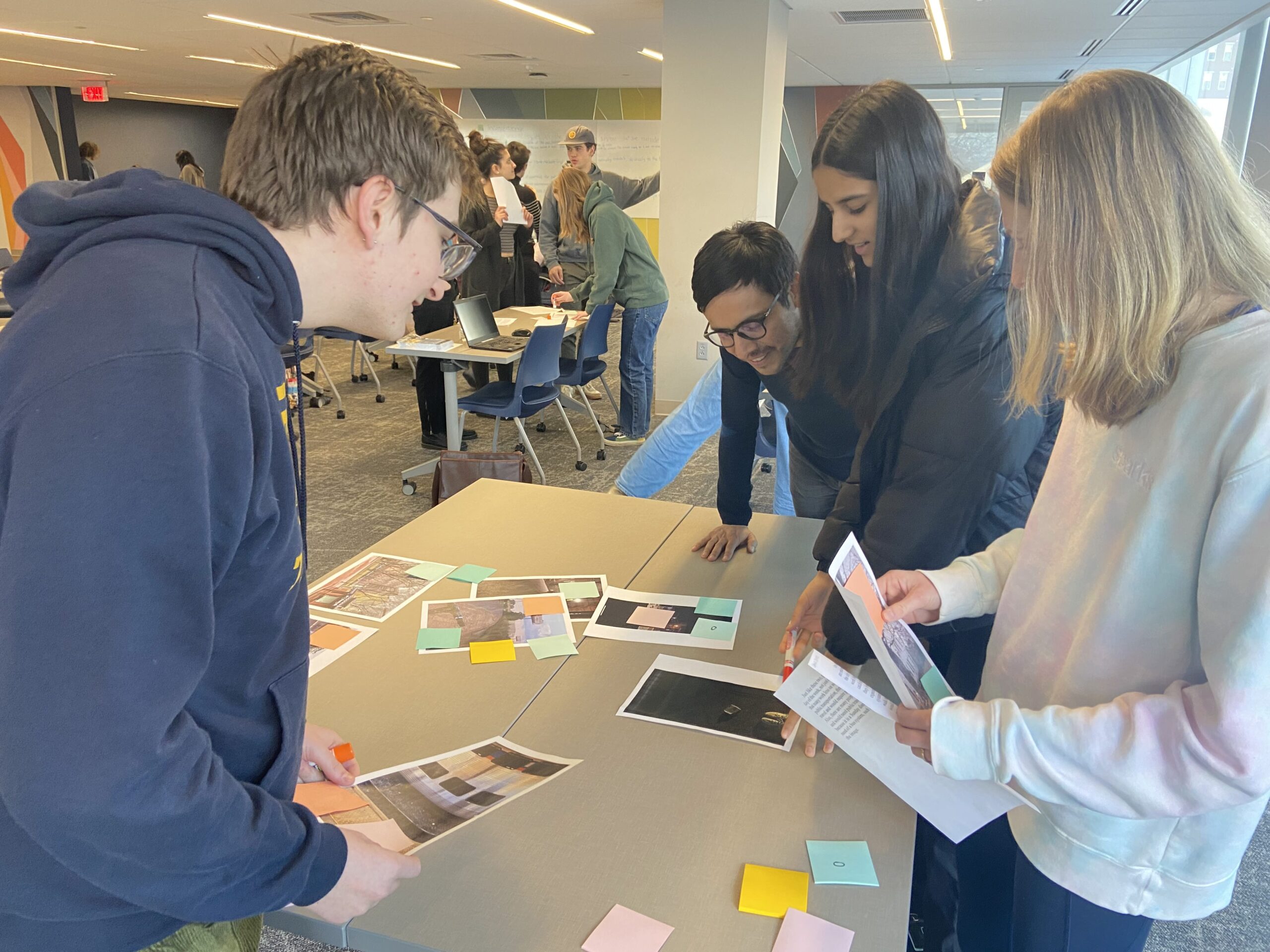My Background and Motivations
After finding out about the Liberal Arts Action Lab in the fall of my junior year, I immediately wanted to get involved. What most drew me to this program was the idea of leaving Trinity College’s campus and getting to know Hartford, as a city and a community, better than I otherwise would have. I was well aware of the cultural and socioeconomic distance between our campus and the rest of the city, and I really wanted to find ways to step out of the protected bubble of our campus while still being able to study and have meaningful experiences. The Action Lab seemed to be the perfect match given my interests, so I applied! Looking back a year later, I am convinced that I made the right choice to enroll in this program, and I am still deeply grateful for all the valuable lessons that the Action Lab taught me.
While it was difficult to choose only one of the 3 amazing projects that were offered in the Spring of 2023, I decided to apply for the Immigrant Welcoming Project due to my personal background and interest in this topic. Having come from an international high school and being an international student at Trinity myself, I was aware of some of the legal, political, and social issues that immigrants face when they come to the United States. Moreover, I understood that this project was very important and relevant for a city like Hartford, which has historically been a popular destination for immigrant communities.
Collaborations and Research Aims
My team and I had the pleasure of working with CT’s Working Families Party as our main community partner. We collaborated with party members Tiana Hercules and Joshua Michtom, who are also members of the Hartford City Council, and their Executive Assistant Renato Muguerza Calle. The political activism of the Working Families Party and their focus on creating an inclusive and egalitarian environment in Hartford was truly impressive. Our team got a chance to discuss their work and political goals during a visit to their offices in Hartford’s City Hall.
Our community partners asked us to answer the following question: “What is the Feasibility of a City-Supported Immigrant Welcoming Center in Hartford, CT?” We aimed to find out what infrastructural changes at the city level were necessary for helping immigrants integrate in Hartford, as well as what could be implemented, given Hartford’s specific social, economic, and political context.To answer these questions, our research plan consisted of three things: researching national best practices in cities comparable to Hartford, conducting interviews with other cities with successful immigrant welcoming programs, and interviewing representatives of Hartford’s immigrant-serving organizations. While conducting this research, it became clear that the reparation and cultivation of trust between the city and its immigrant communities was a crucial aspect of any city-sponsored initiative.
“Our philosophy is that we all need to work together and collaborate together, because if we work together, it only benefits the people that we’re trying to help.”
– Carrie Berman (SAWA)
In our conversations with the stakeholders, we asked them about their services, how they support immigrant communities, as well as what areas they may want to develop in. We also inquired about their relationship with other immigrant-serving organizations and with the city of Hartford, hoping to understand the dynamic networks at play and see whether there are rooms for improvement. Many leaders shared ideas that were specific to their organization, but there was also a lot of overlap among their statements, which allowed us to code them for themes and propose effective solutions. We spoke to more than a dozen immigrant-serving organizations in the city, many of whom voiced that there needs to be a better level of communication and coordination between these organizations and the city, if they were to engage in the most effective way with the communities they serve. You can read more about these organizations on our projects’ website, where we have compiled a list of immigrant-serving organizations with which we worked.
Becoming a Researcher: Lessons on CBPAR, Teamwork, and Goal Completion
As a research method that is based on non-hierarchical and mutually beneficial collaborations between the researcher and the participants, Community Based Participatory Action Research (CBPAR) is the approach used in every Liberal Arts Action Lab project. As young student researchers that were eager to learn more about ways to improve Hartford’s immigrant welcoming infrastructure, our team embraced CBPAR and aimed at implementing it every step of the way, particularly through our interview process.
To do so, we had to learn not only to collaborate with community organizations and partners but also with each other – we had to be a team. While the word ‘teamwork’ often gets thrown around like a cliché, for me it was very important and something that I had to develop like a skill. I was lucky to be working with 7 other very motivated students, who were all eager to perform well as researchers and help each other out if anyone was struggling with their workload. Some challenges that we experienced along the way were: dividing assignments, coordinating meeting times, keeping up with current and upcoming tasks, finding and analyzing relevant data, and many others. As busy college students, it was also challenging to balance this demanding work with the rest of our classes, which is why teamwork became crucial for our success and wellbeing.
Having said all of that, I am proud to say that the fruits of our hard work weighed over the challenges. We successfully gathered data using various sources (existing literature online, demographic information via Social Explorer, structured in-person and virtual interviews, etc.) and analyzed it both individually and as a group using Atlas.ti, a tool made for coding (analyzing) qualitative data. Working with these digital tools required not only acquaintance with the technology, but also a great deal of creativity and team brainstorming. We also created a website page using WordPress where we outlined our research process and shared useful sources related to the topic. These tools were all very new to me and seemed intimidating at first, but as the project went on, it became easier to navigate them. I particularly enjoyed working with WordPress because I developed my website building and editing skills, which is something that I used to see as being out of my reach and reserved only for “tech savvy” people.
“Something I really love about the Action Lab is how dedicated they are to communicating and working with the city of Hartford. I was able to learn about the internal systems of immigrant organizations in Hartford and what these organizations need to aid others.”
– Sara Zahoor (2026)
Lastly, as was requested by our community partners, we also created a Policy Memorandum where we presented our findings and recommendations, arguing that Hartford can and ought to implement several actionable steps in order to support its immigrant communities more effectively. While most of us were initially unfamiliar with the above-mentioned digital tools, as well as the coding process itself, we all developed the skills necessary to use them. I feel a big sense of accomplishment knowing that I will carry these skills beyond the classroom and my time at Trinity, and that they will be useful for my future career and academic development.
Concluding Reflections
Doing this research taught me not only teamwork, but also patience. As a group of motivated students that wanted to help implement change, we were quickly humbled when we realized that our endeavor requires a lot more time, energy, and collaborative work to succeed. With the time frame and resources that we had on our hands, we may not have been able to build an Immigrant Welcoming Center or immediately influence public policy, but we were able to contribute to a broader conversation on improving the relationship between Hartford and its immigrant communities. As a result of our research, our community partners in the City Council applied to the national immigrant welcoming organization, Welcoming America, to begin the process of examining how Hartford’s city structures can be realigned with best practices in integrating newcomers to the city.
I hope that our experience and the results of our work spread the word about the need for improvement in this area, so that Hartford’s immigrants may have a dignified, city-supported transition to their new home. I will remember my time at the Action Lab as an incredibly formative and enriching experience, and one that made me feel a lot more connected with the lively Hartford community that exists outside of Trinity’s gates.


